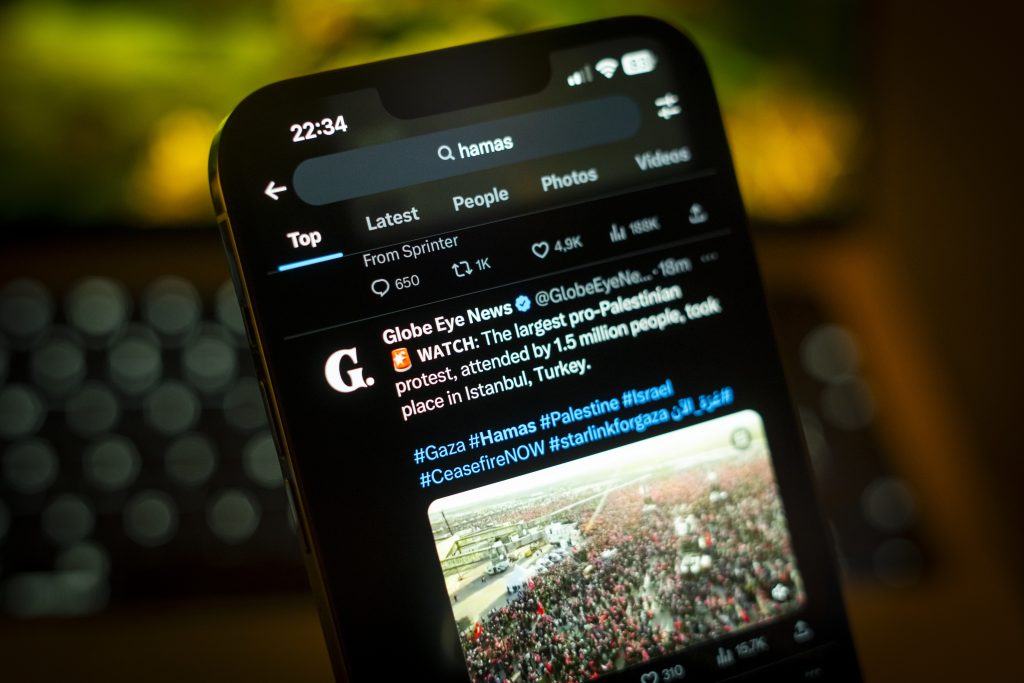Platform design and content moderation decisions affect what people see, hear, and believe about the October 7 Hamas attacks on Israel and the conflict in Gaza that has followed. Do X, Meta, Telegram, and TikTok recognize how their algorithms affect people, politics, and history? Do we?
The first declaration of war came via Telegram.
On October 7, at 7:14 a.m. local time, Hamas’s al-Qassam Brigades used its Telegram channel to announce the beginning of a coordinated terror attack against Israel. Posts on Hamas’s press channel followed several minutes later. The press channel then posted a brief video clip of what appeared to be Israeli buildings in flames at 7:30 a.m. At 8:47 a.m., al-Qassam Brigades released a ten-minute propaganda video seeking to justify the terror attack, which was then shared via the press channel four minutes later. At 9:50 a.m., al-Qassam shared the first gruesome images of the actual attack; at 10:22 a.m., a grisly video collage. In both cases, the press channel followed suit.
Then came many more graphic posts, propelled to virality by both Hamas Telegram channels and a constellation of other Hamas-adjacent paramilitary groups. Within a few hours, the al-Qassam Brigades channel’s distribution grew by more than 50 percent, rising to 337,000 subscribers. Within a matter of days it would surpass 600,000 subscribers. Three other Palestinian militant groups rushed to release self-congratulatory statements about their own roles in the attack, not wanting Hamas to get all the credit. All told, Hamas and Hamas-adjacent groups would produce nearly 6,000 Telegram posts in the first seventy-two hours of the war.
This was an early glimpse of a conflict that would be largely mediated by the internet. In the aftermath of October 7, an audience of tens of millions would turn to social media to understand a terror attack that killed 1,139 people and resulted in the abduction of roughly 240 hostages by Hamas militants. Social media would remain the primary conduit through which audiences tracked and debated Israel’s ensuing siege of Gaza and military operation—one that would kill at least twenty thousand people in the first seventy days of fighting. Many users experienced the crisis not as a series of static news headlines but as a stream of viral events, often accompanied by unverified claims, decontextualized footage, and salacious imagery.
Almost as soon as the war began, it collided with the engineering and policy decisions of social media companies. Differences in their user interfaces, algorithms, monetization systems, and content restrictions meant that the reality of the war could appear wildly distorted within and across platforms. While a full reckoning of social media’s role in the conflict is not yet possible, we wanted to capture early apparent trends: the rapid and mostly uncontested spread of terrorist content on Telegram; the proliferation of false or unverifiable claims on X, formerly Twitter; the often one-sided content moderation decisions of Meta, which worked to the detriment of Palestinian political expression; and deep confusion around TikTok, due to both the insular nature of TikTok communities and a broad lack of understanding about how the TikTok algorithm works.
